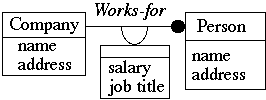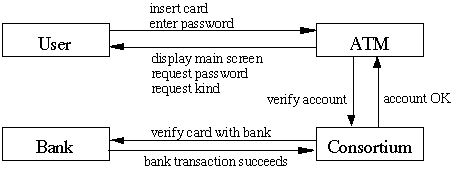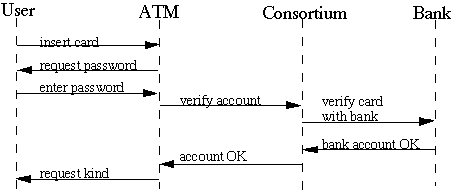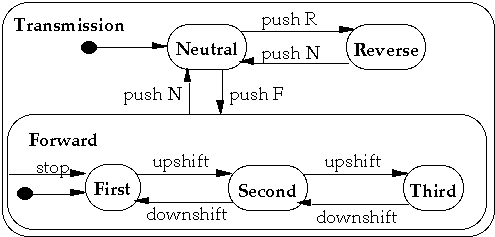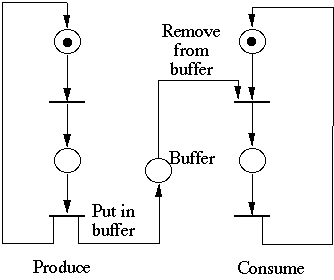 CS535 Object-Oriented Programming & Design
CS535 Object-Oriented Programming & DesignDoc 31, Some OO Problems/Issues
 CS535 Object-Oriented Programming & Design
CS535 Object-Oriented Programming & Design
abstract class One {
public void A() { print( "A, 1" ); B(); C(); }
public void C() { print( "C, 1" ); }
abstract public void B();
abstract public void D();
public void print( String message ) {
System.out.println( message );
}
}
class Two extends One {
public void B() { print( "B, 2" ); D();}
public void D() { print( "D, 2" ); }
}
class Three extends Two {
public void A() { print( "A, 3" ); super.A(); }
public void B() { print( "B, 3" ); super.B(); }
}
class Four extends Three {
public void A() { print( "A, 4" ); super.A(); }
public void C() { print( "C, 4" ); super.C(); }
}
class Five extends Four {
public void D() { print( "D, 5" ); super.D(); }
}
public static void main( String args[] ){
Five yoyo = new Five();
yoyo.A();
}
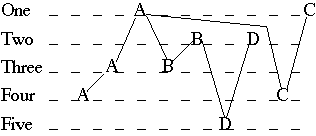
A, 4 D, 5
A, 3 D, 2
A, 1 C, 4
B, 3 C, 1
B, 2
class test
{
public void foo()
{
value[20] = value[10] + 5;
}
public void bar() { stuff not shown };
private float value[] = new float[ 100 ];
}
class test
{
public void foo()
{
setValue(20, getValue(10) + 5);
}
public void bar() { stuff not shown };
protected float getValue(int location)
{ return value[location]; }
float test::setValue(int location, float newValue)
{ value[location] = newValue; };
private float value[] = new float[ 100 ];
}
class GraderProgram
{
Course activeCourse = new Course();
// Accessor methods for activeCourse
protected void addStudent( String name, String ID )
{
activeCourse.addStudent( name, ID );
}
protected void someMethodInGraderProgram()
{
lots of stuff here
addStudent( name, ID );
}
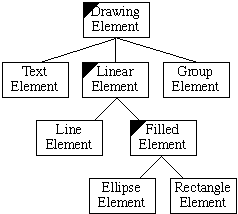
| Variables | Classes | |
| Statements | Class relationships | |
| Operations | inheritance | |
| State | collaborations | |
| Public interface | Objects | |
| Private operations and state | Object relations | |
| Contracts | Subsystems | |
| Programs |
Name: identifier Documentation: text description Visibility: exported/private/imported Cardinality: 0/1/n Hierarchy Superclasses: list of class names Subclasses: list of class names Generic parameters: for template classes Public Members Uses: list of classes used by me Data members: list of data members & text description Function members: list of function declarations Protected members Data members: (see above) Function members: (see above) Private Members Data members: (see above) Function members: (see above) Subclass must implement Function members: (see above) Hierarchy graph: location of graph State machine graph: graph(s) Complexity Space: text description Time: text description Persistence: persistent/transitory Concurrency: sequential/concurrent
Name: identifier
Documentation: text description
Category: modifier/selector/iterator/
constructor/destructor
Inheritance: new/refine/override
Formal Parameters: parameter declarations
Return value: type/class name
Preconditions: PDL
Action: PDL
Postconditions: PDL
Exceptions: list of exceptions
Concurrency: sequential/concurrent
Complexity
Space: text description
Time: text description
Association  Ternary Association
Ternary Association 
Multiplicity of AssociationsLink Attribute
